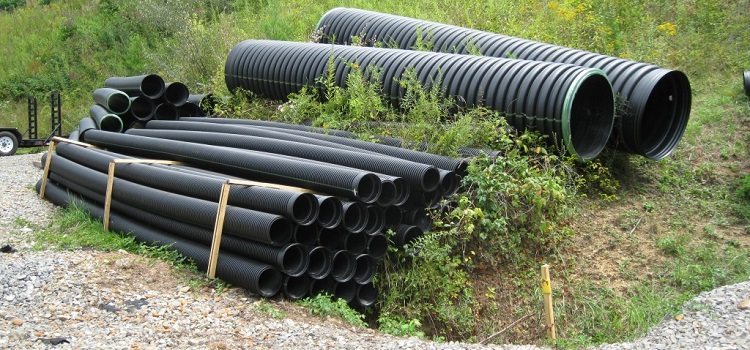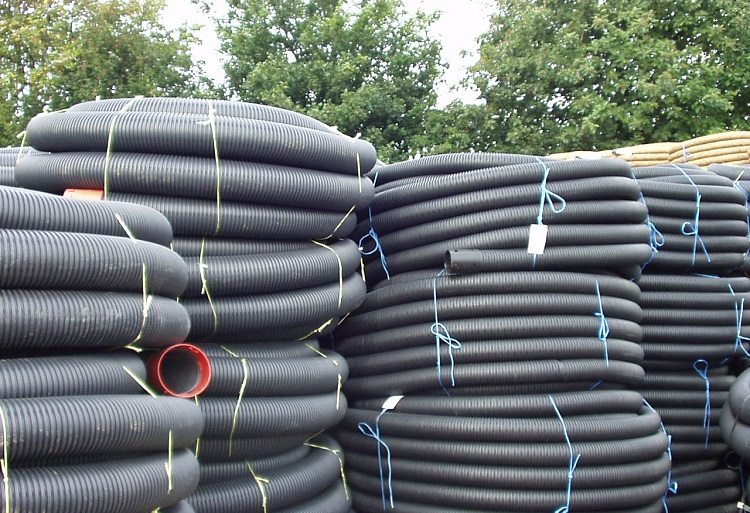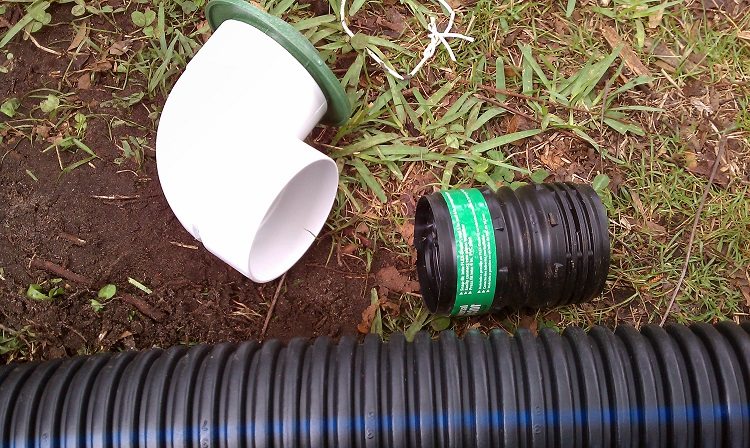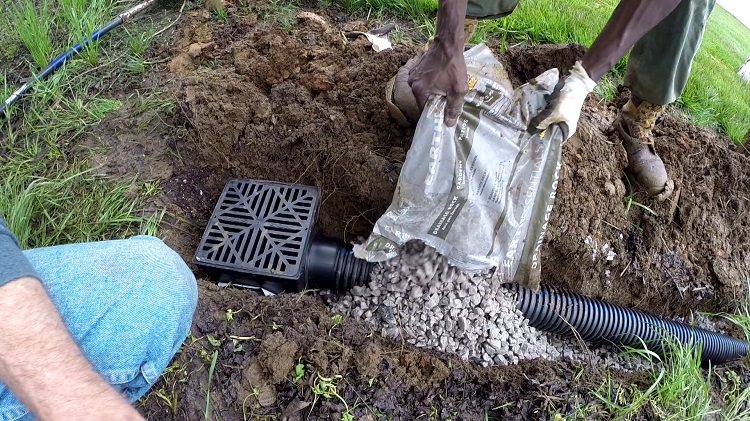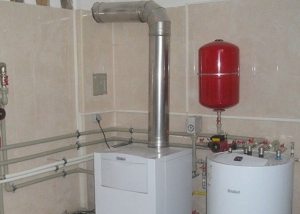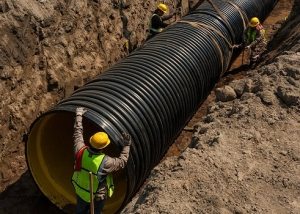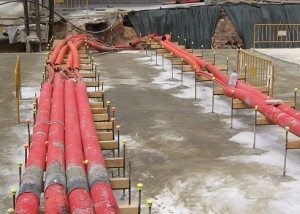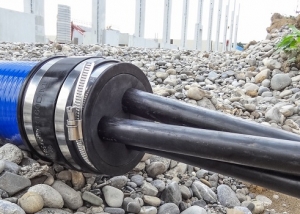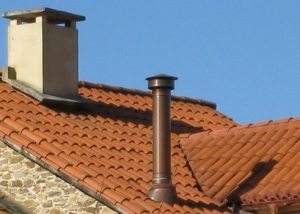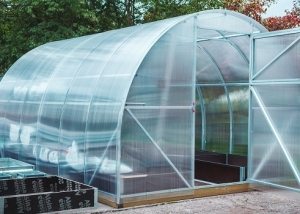Installation of a drainage system allows you to effectively solve a number of operational and construction problems that are associated with an increased level of groundwater. The most effective for laying such a line is a corrugated drainage pipe. Depending on the strength class, this product can be laid at different depths.
Content
Drainage systems: main types
The main purpose of the drainage system is to drain groundwater or flood waters with a high occurrence point from the site or from certain building structures. The drainage pipe is laid in such cases:
- the need for drainage in wetlands, lands with high humidity, on which there is no way to perform agricultural work;
- drainage of the site before the start of construction work;
- groundwater discharge from the foundation of the constructed building.
Rain water is not allowed to be drained into the drain pipe, because with heavy rain the water in the system will rise into the foundation of the house. Different goals require different drainage systems. The easiest way is to open the drainage ditch.
The filling lines of the ditches are filled with material that promotes the removal of water, for example, gravel. The most productive is considered a method involving the use of a perforated drainage pipe.
For such lines, channels from different materials are used: asbestos, ceramics and polymers. Ceramic and asbestos pipe is durable, but it is not perforated. For drainage systems this is unacceptable, therefore, holes in the product must be drilled independently. In addition, such pipes are heavy, which makes installation work difficult, quickly silt, and this reduces the efficiency of drainage, and their components are quite expensive. Plastic pipes for drainage are devoid of such drawbacks, so they are most often used.
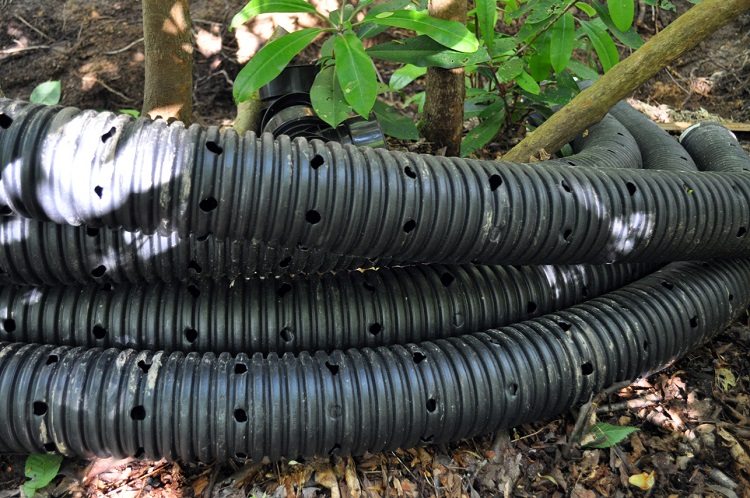
You can purchase a pipe with ready-made drainage holes to make the installation process less time-consuming
Polymer drainage pipes
For the production of polymer pipes for drainage systems, low pressure polyethylene (HDPE) or polyvinyl chloride (PVC) is used. The best option is a corrugated drain pipe with a diameter of 110 mm. The inner surface of the product is very smooth, which minimizes resistance to the movement of effluents. The pipe has perforation, which allows to optimize the volume of incoming wastewater.
Note! With self-perforating pipes, an incorrect calculation of the number of perforation holes will reduce the throughput of products, and an increase in their diameter will lead to rapid siltation.
The outer corrugated surface increases the rigidity of the products. This makes it possible to lay such pipes at a considerable depth. For example, classes SN16 and SN8 can be laid to a depth of more than 10 m. They are resistant to corrosion, aggressive chemical elements that are often found in groundwater.
Corrugated PVC pipe for drainage is used not only in water drainage systems, but also as a material for installing filtering fields for dumping sewage from a septic tank (an element of an autonomous cleaning system). They can be produced using geotissue filtration shells.
Key Channel Features
In the production of drainage pipes, high-quality polymers are used. PVC drainage channels are divided into single-layer, which have a ribbed surface on both sides, and two-layer, characterized by a smooth inner wall, which improves the flow of fluid through the pipe.
Polyvinyl chloride products are divided into strength classes: SN16, SN8, SN6, SN4, SN2. Corrugated drainage pipes can be produced in hard execution in sections of 12 or 6 meters, and also in soft - in bays up to 50 m.
In the production process of such channels, the base material is sometimes reinforced with various additives. In order to combat the clogging of holes, a braid is used. It is different for different types of soil. For clay, it is better to use protection from coconut fiber, for sand and loam - from geotextiles.
Drainage polymer pipes with a working temperature range of -40 ° С - + 45 ° С have significant ring strength and good insulating ability.
The advantages of corrugated drainage pipes
Corrugated pipes for drainage systems are widespread due to their properties:
- simple styling technology;
- low weight;
- reliability;
- a large area of perforation;
- high corrosion resistance;
- perforation protection from siltation;
- good durability;
- longevity.
The installation of such pipes is many times faster than asbestos-cement and ceramic. It does not require the use of lifting equipment. The annular butt joints are sealed, which ensures the reliability of the assembly of the line.
Corrugated walls of drainage pipes make it possible to arrange non-linear channels. The perforation that is performed on them may be round or slit-like. It is located on 60 or 30% of the pipe surface and is evenly distributed around its circumference.
Note! The degree of perforation of the pipe depends on the level of groundwater. In the case of significant fluctuations, a channel with holes over the entire surface is used. The total area of all holes reaches 50 cm2 per linear meter.
Polymer pipes are not subject to decomposition and corrosion, like metal analogues. In addition, their throughput is 25% higher. Excellent strength allows corrugated drainage pipes to withstand the mass of overlying soil without deformation of the product body.
A pipeline of polymer pipes can last up to 50 years, without the need for repairs.
Installation of a system for draining water from polymer pipes
Corrugated drainage pipes are used for the installation of closed systems. They fit into previously dug trenches, the depth of which exceeds the level of freezing of the earth in winter. The efficiency of water drainage depends on the slope of the drainage line. It should be at least 3% in the direction of the location of the receiving devices.
Joining of pipes is carried out manually without any tools, using special couplings having rubber seals. To assemble the drainage system, in addition to the channels, it is necessary:
- transitional branch pipes;
- couplings;
- tees;
- end caps.
The following device of the drainage system is considered optimal. At the bottom of the trench is a sand cushion with compulsory tamping. Using it, you can carry out the correction of the angle.Next, geotextiles are laid that will filter the incoming groundwater. A layer of rubble is placed on the geotextile.
At the next stage, drain pipes HDPE or PVC are mounted. Separate elements are connected by special fittings.
Note! If the line is long, then it is necessary to ensure the installation of revision wells every 50 meters.
The main line is again closed with a layer of crushed stone and geotextiles, the longevity of the network as a whole depends on the quality of laying. At the last stage, it is necessary to fill the trench with sand and soil. If necessary - insulate.
Drain pipe manufacturers
The modern market of products for the installation of drainage systems is represented by a large number of manufacturers: Rehau, ZAO Ruvinil, Nashorn, Politek, Wavin, Uponor, etc.
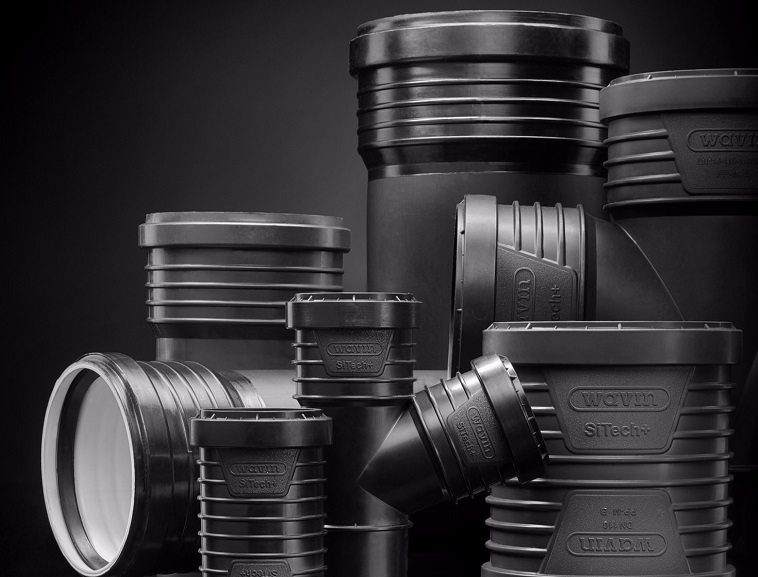
In order for the drainage system to function for a long time and without interruption, it is better to purchase pipes and fittings of a well-known manufacturer
ZAO Ruvinil: manufactures drainage pipes from polyethylene, which does not contain halogens, have optimal perforation, are operated in the temperature range of 20-90 ° С. Quality control is carried out at all stages of production.
Nashorn: offers a large assortment of channels made of high and low pressure polyethylene. Products, depending on the type, have high wear-resistant and frost-resistant properties. For filtering, geotextiles from an American manufacturer are used. PND corrugated pipes They are flexible and have a good price / quality ratio.
Punched: uses high-modulus polyethylene together with mineral additives, which give the product better rigidity, pipes are available in two types - with perforation in the upper part and holes over their entire surface.
Wavin: pipes are made from primary raw materials, products with filtering material and without it are presented, fastening is made by several threads from nylon uniformly over the entire area.
Uponor: the products are made of high-density polyethylene and have a double wall that allows them to be used in drainage systems under highways, single-layer pipes have a filter made of coconut fiber.
Polieco: the pipes produced have a double wall, which allows their use at a depth of 15 meters, a rigid outer corrugated layer and a thin inner layer that provides the necessary hydraulic characteristics.
Drainage lines using corrugated polymer pipes are most effective. Installation work can be done with your own hands, but for design it is better to contact specialists.
